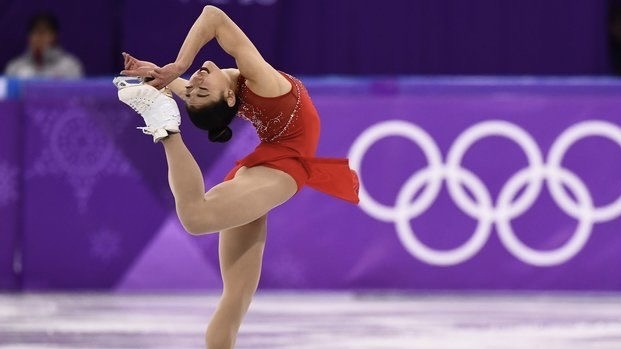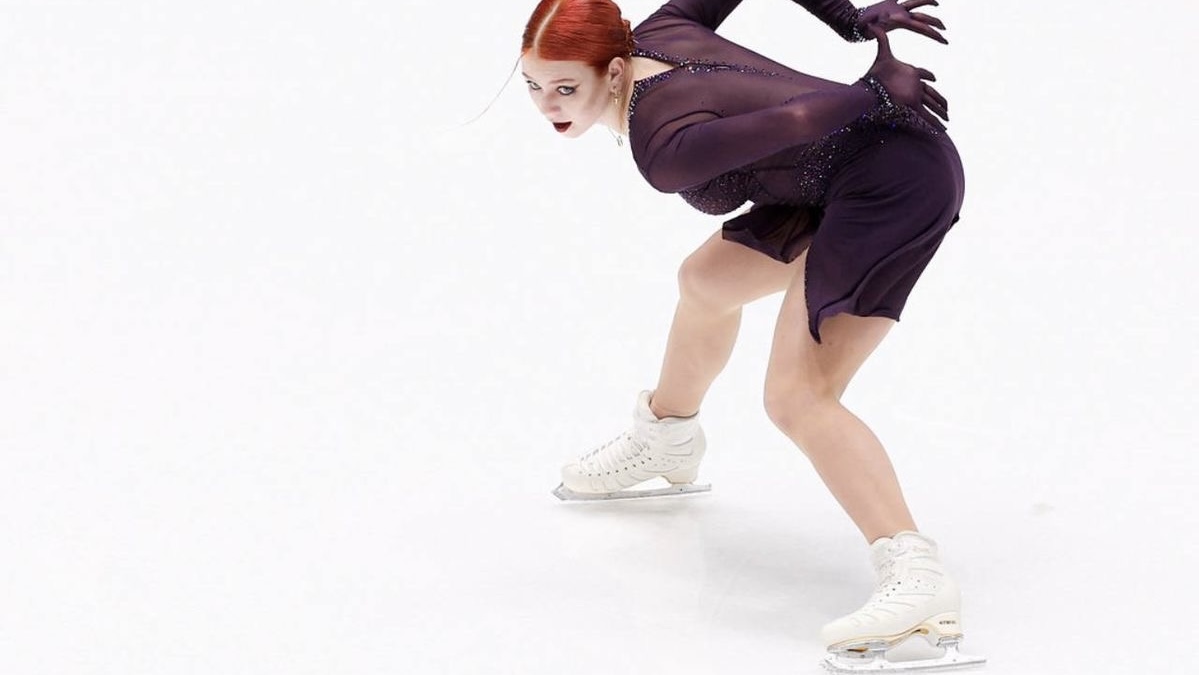January 15, 2025
Alexandra Trusova Expecting a Child
May 16, 2025

Spinning is a hallmark of figure skating, with elite skaters performing upright, camel, or sit spins at speeds up to six revolutions per second, often leaving spectators dizzy just watching. Yet, dizziness can disrupt balance and performance, especially for skaters learning complex spins like those required in Olympic programs, which demand at least six revolutions for individual spins and 10 for combinations. A 2019 Journal of Sports Sciences study notes that dizziness, caused by fluid movement in the inner ear’s vestibular system, can impair balance by 15% if untrained. Drawing on insights from Olympic figure skaters and scientific research, this article provides practical tips to help skaters manage and reduce dizziness during spins, enhancing control and confidence on the ice.
Dizziness during spins arises from the vestibular system, where three fluid-filled semicircular canals in the inner ear detect head motion. When you spin, the fluid moves, stimulating hair cells that signal movement to the brain. Upon stopping, the fluid’s inertia causes it to continue moving, creating a false sense of rotation, known as nystagmus, which triggers dizziness. A 2018 Journal of Strength and Conditioning Research study explains that untrained individuals experience dizziness for 10–15 seconds after spinning, while trained skaters adapt to suppress this sensation. Olympic skaters like Mirai Nagasu and Bradie Tennell emphasize that while dizziness is universal early in training, specific techniques and consistent practice can minimize its impact.
The most effective way to reduce dizziness is repeated exposure to spinning, which trains the brain to suppress the vestibular system’s false signals. A 2020 Journal of Sports Medicine study found that consistent spin practice over 12 weeks reduces dizziness perception by 20%. Start with slow, single-revolution spins and gradually increase speed and rotations as comfort improves.
Mirai Nagasu’s Tip: 2018 Olympic bronze medalist Mirai Nagasu, in a 2022 CNN interview, shared that she felt dizzy early in her career but built tolerance through daily practice. “I started with one or two spins, feeling woozy, but kept at it,” she said. “Over years, my brain learned to ignore the spin’s aftereffects.” Nagasu recommends practicing spins in short bursts—five spins, rest, repeat—three times weekly to acclimate gradually without overwhelming the system.
Controlling spin speed minimizes dizziness, as the vestibular system is most sensitive to acceleration and deceleration. A 2016 Scientific American article notes that steady rotation reduces dizziness compared to rapid changes in speed. Focus on entering and exiting spins smoothly to maintain a consistent pace.
Karen Chen’s Tip: Team USA’s Karen Chen, a 2022 Olympian, told TODAY in 2022 that maintaining a steady spin speed helps her stay oriented. “When I keep my spin smooth and even, I don’t feel the dizziness as much,” she said. Chen advises skaters to practice spins with a metronome-like rhythm, aiming for a constant tempo, and to avoid sudden stops. She suggests three 10-minute sessions weekly, focusing on five steady spins per set, to train this control.
Keeping your feet in one spot during a spin reduces disorientation by stabilizing your body’s position on the ice. A 2014 New York Daily News article cites skating coach Mary Lynn Geldermann, who explains that elite skaters stay “on their mark” to control dizziness, unlike beginners who may drift across the ice.
Bradie Tennell’s Tip: 2018 Olympic bronze medalist Bradie Tennell shared with TODAY in 2022 that centering her spins was key to managing dizziness. “If I stay in one place, my body feels more grounded,” she said. Tennell suggests practicing upright spins while visualizing a fixed point on the ice, aiming to keep your blade within a small circle. She recommends two weekly off-ice drills, spinning on a hard surface for 10 seconds, five times per session, to reinforce centering.
Blinking rapidly after a spin can help reset visual focus and reduce the dizzy sensation caused by nystagmus. A 2020 Psychology of Sport and Exercise study notes that quick eye movements post-spin improve balance recovery by 10% by recalibrating the brain’s visual input.
Bradie Tennell’s Tip: Tennell, in her 2022 TODAY interview, revealed a unique trick: “Sometimes blinking a lot after a spin helps. If you see me blinking fast, that’s why.” She explained that rapid blinking helps her “snap out” of dizziness, allowing her to skate straight. Tennell advises skaters to practice five spins, followed by 5–10 seconds of rapid blinking, during two 15-minute sessions weekly to build this habit.
Focusing on a stationary object, like a spot on the rink’s boards, immediately after a spin helps reorient the brain and stabilize balance. A 2022 CNN article cites Professor Kathleen Cullen, who notes that this technique, adapted from ballet’s “spotting,” minimizes dizziness by providing a fixed visual anchor, though spotting during fast spins is unsafe for skaters.
Mirai Nagasu’s Tip: Nagasu, in her 2022 CNN interview, emphasized post-spin fixation. “As I exit a spin, I look at a specific spot in the arena to ground myself,” she said. This helped her maintain balance during her triple axel at the 2018 Olympics. Nagasu suggests practicing spins and immediately locking eyes on a rink landmark, like a sign, for 3–5 seconds. She recommends three weekly sessions, performing 10 spins with this focus, to make it instinctive.
Dizziness during figure skating spins is a common challenge, but with targeted strategies, skaters can minimize its impact and perform with precision. Olympic skaters like Mirai Nagasu, Karen Chen, and Bradie Tennell show that progressive practice, steady spin speeds, centered spins, rapid blinking, and post-spin fixation are powerful tools to combat dizziness. Backed by science, these tips—practiced consistently 2–3 times weekly—can train your brain to suppress the disorienting effects of spinning, whether you’re mastering a scratch spin or a complex combination. Skaters, integrate these techniques into your routine, start slow, and consult coaches to refine your approach. With dedication, you’ll spin confidently, leaving dizziness behind and dazzling on the ice.
By Vitalina Andrushchenko, Staff Writer

January 15, 2025
Alexandra Trusova Expecting a Child

December 26, 2024
2025 World Junior Championship Schedule

April 05, 2025
Alexandra Trusova and Makar Ignatov Reveal the Gender of Their Future Child